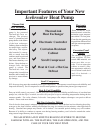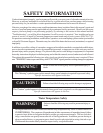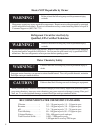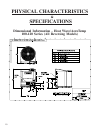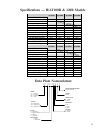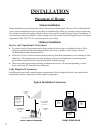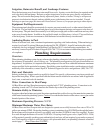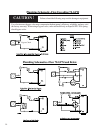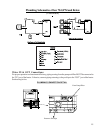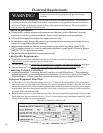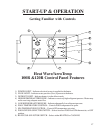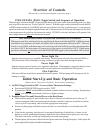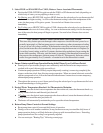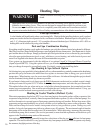
13
Equipment Pad Requirements:
The equipment pad should be constructed of concrete, pressure treated wood, or other material intended
for the use. The pad shall be elevated and placed to provide adequate drainage and support to the base of
the heat pump. The pad should be essentially level with just enough pitch to drain condensate and any other
water away from the heater. In addition, the pad shall extend–in all directions–(at least) 3" beyond the base
of the heat pump. Under no circumstances shall the heater be installed directly onto the earth.
Irrigation, Rainwater Runoff, and Landscape Features:
Place the heat pump away from direct rain runoff from roofs. A gutter or rain shield may be required on the
roof edge above the heat pump. Relocate or adjust irrigation to avoid water spray directly onto the heat
pump. Do not locate the heat pump directly adjacent to plants, shrubs, or bushes. Doing so will prevent
proper air circulation into the unit, and may inhibit access to the heater when service is needed. Consult
drawings on previous page (Recommended Installation Clearances) for proper spacing to other objects.
Anchoring Heater to Pad:
Follow all relevant local, state, or national requirements regarding wind load anchoring. When anchoring is
required, use AquaCal optional Hurricane Anchoring Kit, PN: STK0001. AquaCal anchoring kits satisfy,
completely, the very stringent Florida Building Code Section 301.13 wind anchoring requirements. As
necessary, contact AquaCal Technical Support (800-786-7751) for assistance in determining best method
of compliance.
Plumbing Requirements
Overview:
When planning plumbing system layout, reference the plumbing schematics following this section as a guide to
the sequence of equipment, valves, fittings, etc. The plumbing configurations for typical installations are
diagrammed. In operation, it is imperative the heat pump receive water flow within the minimum-maximum
ranges specified for the particular heat pump. Should the system installation under consideration not closely
match any of the schematics, contact AquaCal Technical Support for advice and guidance: (800) 786-7751.
Minimum/Maximum Water Flow Rates:
All Heat Wave and AeroTemp models are designed to operate successfully between flow rates of 20-to-70
gallons-per-minute (GPM). Design the plumbing system to maintain at least 20-GPM flow through the heater;
the heat pump will not operate correctly, nor reliably, with less than 20-GPM of water flow supplied. If water
flow rates through the heater will exceed 70-GPM, a 5-lb spring-check bypass valve (AquaCal P.N.: 2556)
will be required; generally speaking, most residential pools and spas will not require a bypass unless a pump of
two (2) horsepower or larger is used (for bypass valve placement details, see plumbing schematic contained
on next page: “…Flow Greater than 70-GPM”).
Parts and Materials:
Industry technology changes much too rapidly for AquaCal to specify, with exactness, any items outside and
beyond the heat pump. What is specified is that the heater must be installed in accordance with all applicable
local, state, or national codes & standards.
Water Connections to Heat Pump:
All Heat Wave and AeroTemp heat pumps are supplied with 2" PVC plumbing unions. Connection to site
plumbing is made via PVC solvent cement to the female slip socket of the plumbing unions.
Maintain Ability to Winterize:
In regions where hard winters are typical, the unions mentioned above allow for easy disconnection/reconnection
of the heater from/to the plumbing system. Caution: Do not defeat the function of the unions–use no glue on the
threaded portion of the unions.
Maximum Operating Pressure: 50 PSI




